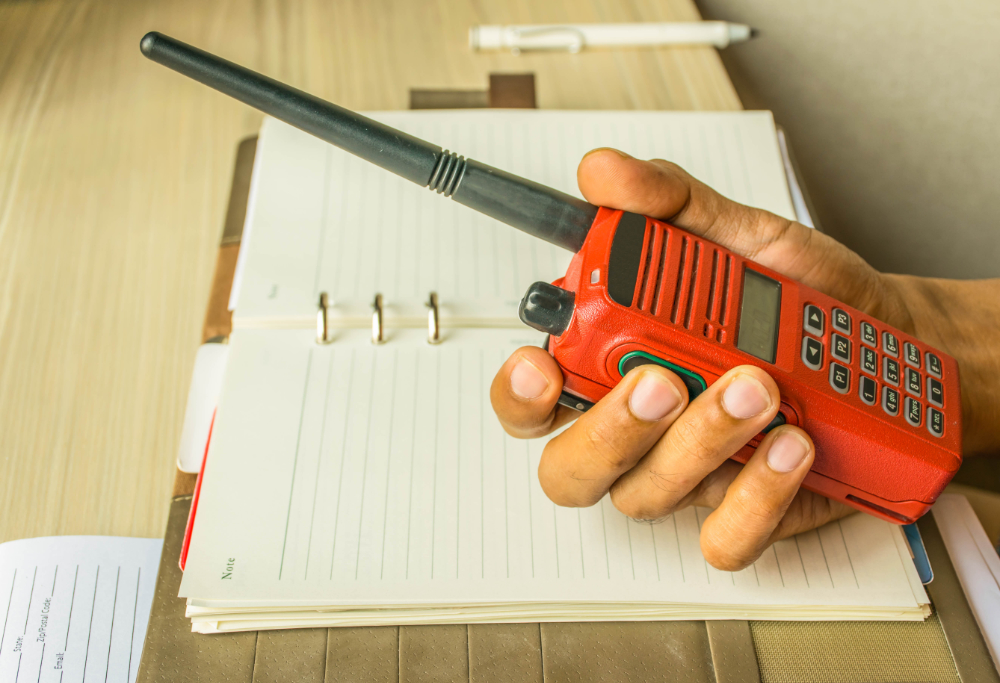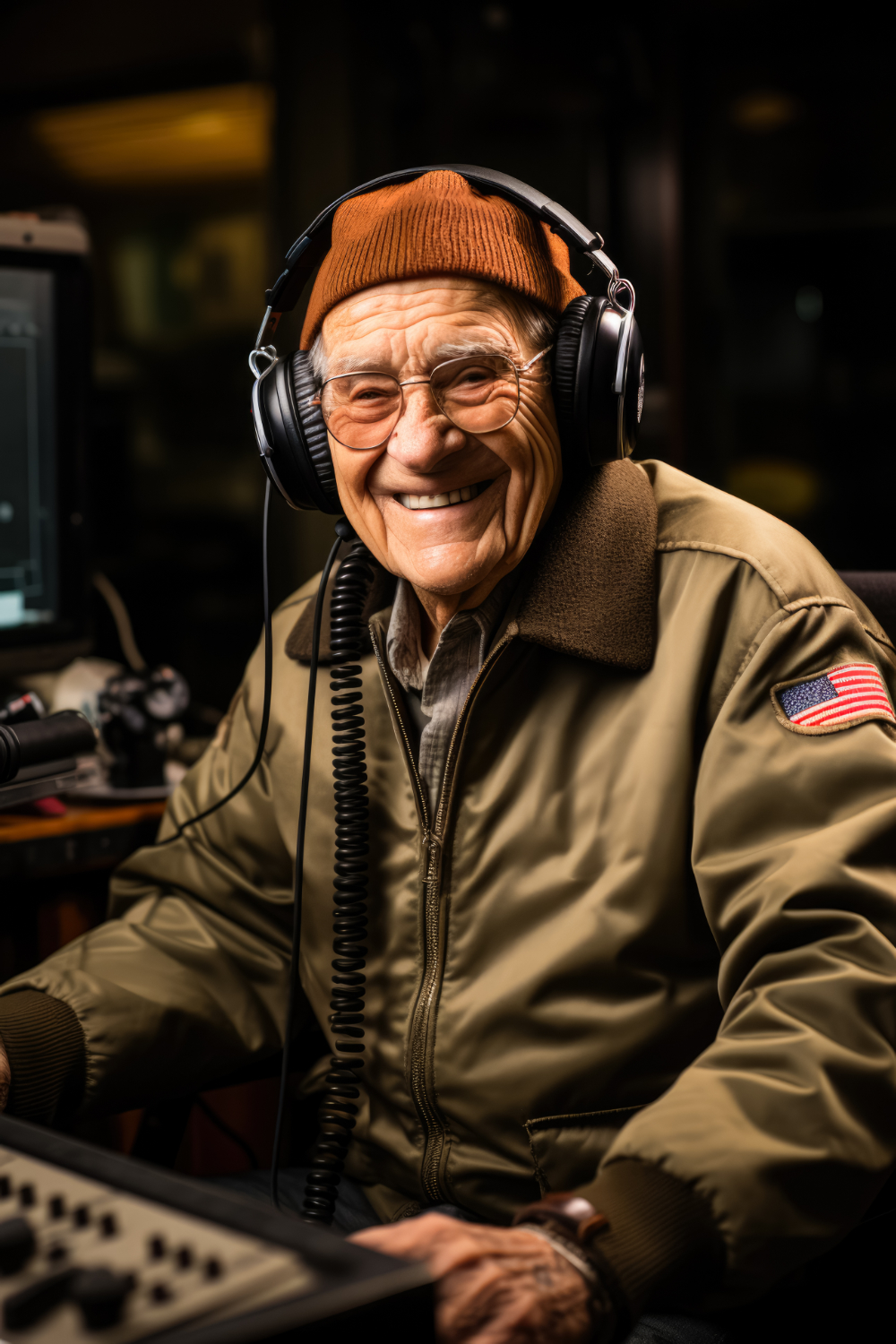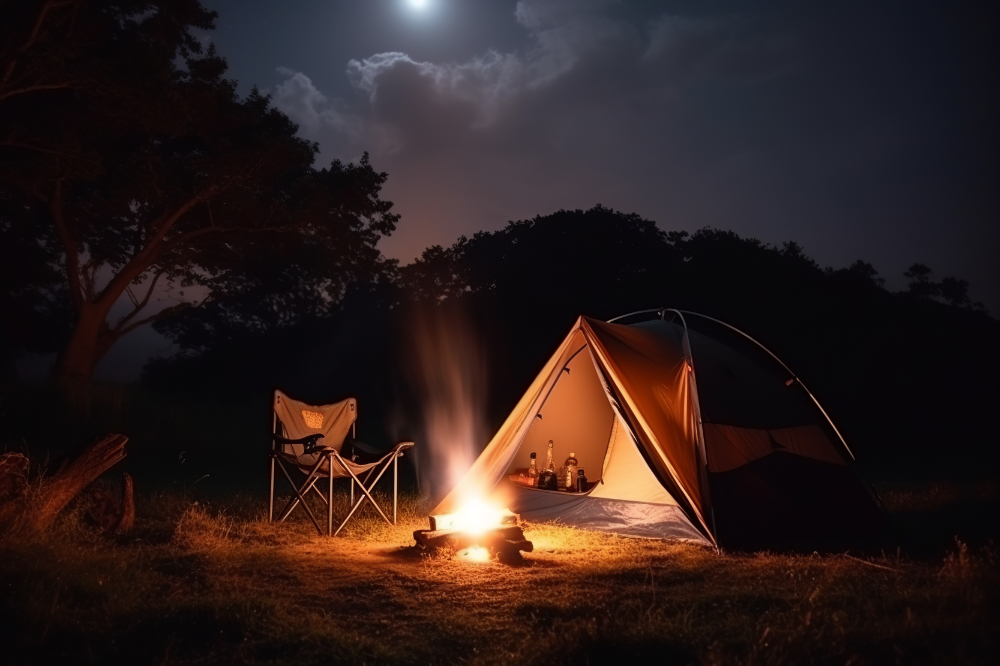Ham Radio: A Lifeline in Emergencies
THE STORY: Rescued by Radio in the Wilderness
It was a bright summer morning when Sarah and her friends set out for a day of hiking in the remote wilderness of a national park. The group of four was well-prepared with supplies, including a ham radio, in case of emergencies. As they ventured deeper into the forest, they marveled at the natural beauty around them. Little did they know that they were about to face an unexpected crisis.
Several hours into their hike, a sudden change in weather caught them off guard. Dark clouds gathered overhead, and a torrential downpour began. Soon, they found themselves disoriented, and their trail markers were washed away by the heavy rain.
As panic started to set in, Sarah remembered the ham radio they had brought along for emergencies. She quickly retrieved it from her backpack and turned it on. With a sense of urgency, she called out for help on a designated emergency frequency. Moments later, a response crackled through the radio.
It was a fellow ham radio operator, Frank, who lived nearby and was monitoring the emergency channel. Sarah explained their situation, providing their approximate location and the fact that they were lost and soaked from the rain.

Frank, with his experience and knowledge of the area, guided them to a safer location while staying in constant communication. He shared valuable information about finding a nearby shelter and offered reassurance to the group, keeping their spirits up during the ordeal.
Thanks to the ham radio and Frank’s assistance, Sarah and her friends eventually reached safety, taking shelter in a remote cabin until the storm subsided. Search and rescue teams were deployed, guided by the coordinates provided by Frank, and the group was rescued the following day.
This scenario highlights how a ham radio, even in the most remote and challenging environments, can be a lifeline during a crisis. It enabled Sarah and her friends to connect with a knowledgeable and caring individual who, through their expertise and the power of radio communication, played a pivotal role in ensuring their safety and eventual rescue.
In an age dominated by advanced communication technologies, ham radio, or amateur radio, might seem like a relic of the past. However, this resilient and versatile form of communication plays a crucial role in emergency situations. When traditional communication methods falter, ham radio operators become invaluable first responders, providing a lifeline for those in need. Here’s a closer look at how ham radio can be a lifesaver during emergencies.
What about a CB Radio, Walkie Talkie, or a Satellite Phone?
CB Radio Vs a Walkie Talkie
CB radios and walkie-talkies are both portable communication devices, but they serve distinct purposes and come with notable differences in terms of range, licensing, and functionality.
One of the key differences lies in their range and frequency bands. CB radios, or Citizens Band radios, operate on a set of 40 channels within the 27 MHz range. These channels have a range of a few miles at best, making CB radios suitable for short-range communications primarily on highways or between vehicles in close proximity. In contrast, walkie-talkies, also known as two-way radios, come in various models, including Family Radio Service (FRS) and General Mobile Radio Service (GMRS). FRS walkie-talkies are license-free and typically offer a range of up to 2 miles in ideal conditions, making them suitable for recreational activities like hiking and camping. GMRS walkie-talkies, on the other hand, require a license and can provide extended ranges, potentially reaching several miles to over 30 miles, depending on terrain and conditions. This versatility allows walkie-talkies to serve both short-range and longer-range communication needs.
Another significant difference is the licensing requirements. CB radios are generally license-free for use in most countries, making them accessible to the general public. Anyone can purchase and operate a CB radio without needing to pass an exam or obtain a license. In contrast, GMRS walkie-talkies, which offer longer ranges, require users to obtain a GMRS license from the government, involving a straightforward application process. FRS walkie-talkies, typically designed for shorter ranges, do not require a license and are available for public use. The licensing distinction reflects the regulatory differences between these two communication devices and the varying levels of access and responsibility they entail.
CB Radios Vs Ham Radios
CB (Citizens Band) radios and Ham (Amateur) radios are two distinct communication tools that serve various purposes and operate under different regulations. While both offer a means of wireless communication, they cater to different user groups and come with significant differences in terms of licensing, frequency bands, and functionality. In this comparison, we’ll explore the key distinctions between CB radios and Ham radios.
Licensing and Regulation
One of the most significant differences between CB radios and Ham radios lies in licensing and regulation. CB radios are typically license-free and open for use by the general public. Users can simply purchase a CB radio and start communicating within the designated CB frequency bands. In contrast, Ham radios require operators to obtain an amateur radio license from the government, which involves passing a written examination to demonstrate knowledge of radio regulations and operating procedures. This licensing process ensures that Ham radio operators adhere to specific rules and codes of conduct.
Frequency Bands
Another crucial difference is the frequency bands used by CB radios and Ham radios. CB radios operate in a limited set of 40 channels in the 27 MHz range, with maximum power restrictions. These channels are shared by all CB users and are primarily used for short-range, local communications. Ham radios, on the other hand, have access to a wide range of frequency bands, spanning from HF (High Frequency) to UHF (Ultra High Frequency) and beyond. This expansive range allows Ham radio operators to communicate locally, regionally, and globally, depending on the frequency band and propagation conditions.
Purpose and Use
CB radios are primarily used for personal and short-range communication. They are commonly found in vehicles, particularly among truckers and off-road enthusiasts, who use them to stay in touch with others on the road or trail. CB radios offer simplicity and convenience for casual users and are not intended for long-distance or emergency communication.
Ham radios, on the other hand, are used for a wide range of purposes, including hobbyist activities, emergency communication, experimentation, and public service. Ham radio operators, or “hams,” can communicate with fellow operators worldwide and provide vital emergency communication during disasters when other forms of communication may be compromised. The versatility and capabilities of Ham radios make them a valuable resource in both recreational and critical situations.
Technical Capabilities
CB radios are relatively straightforward in terms of technical capabilities. They typically offer limited power output and channel selection. In contrast, Ham radios come in a variety of classes and types, ranging from handheld transceivers to high-powered base stations. Hams can experiment with different modes of communication, such as voice, Morse code, digital modes, and even satellite communication. This flexibility allows Ham radio operators to explore various aspects of radio technology and communication.
Satellite Phones vs. Ham Radio: Two Distinct Communication Tools
Satellite phones and ham radios represent two distinct approaches to off-grid communication. Satellite phones provide a direct link to the global telecommunications network, relying on a network of satellites to transmit voice, text, and data messages. They are user-friendly and offer real-time communication with anyone, anywhere, making them ideal for emergencies, remote travel, or staying in touch with loved ones from remote locations.
Also,iIn contrast, ham radios, or amateur radios, are a hobbyist’s choice for off-grid communication. They require a license and the use of specific frequency bands. While ham radios offer long-range communication capabilities and can be invaluable in emergencies, they lack the immediacy and simplicity of satellite phones. The choice between the two depends on one’s specific needs and interests, with satellite phones providing a more accessible and reliable option for most users, while ham radios offer a valuable skill set and community for enthusiasts willing to invest the time and effort to obtain a license and learn the technology.
Also, in contrast, ham radios offer a wide range of frequencies and communication modes, making them more versatile. To operate a Ham Radio legally, individuals must obtain a license from their country’s regulatory authority, which typically involves passing an exam on radio theory, regulations, and operating procedures. Ham radio operators engage in various activities, including emergency communication, experimenting with technology, and providing public service during disasters.
The choice between a CB radio, a Walkie Talkie, a Satellite Phone, and a Ham Radio ultimately depends on the user’s interests, needs, and willingness to obtain a license.

A Ham Radio: Independence from Infrastructure:
– One of the most significant advantages of ham radio is its independence from traditional communication infrastructure. When natural disasters like hurricanes, earthquakes, or severe storms damage cell towers and disrupt power grids, ham radios can still function using batteries or alternative power sources. This resilience ensures that vital communication remains available when it’s needed most.
Long-Distance Reach:
– Ham radios can communicate over long distances, even across borders or continents. This capability becomes crucial in emergencies when conventional lines of communication are severed. Amateur radio operators can relay critical information to authorities, emergency services, or other affected areas, helping coordinate rescue and relief efforts.
Local Community Support:
– Ham radio enthusiasts often form local clubs and networks, creating a strong sense of community. During emergencies, these networks become essential for sharing information about local conditions, safety, and available resources. Ham radio operators can quickly establish contact with other operators in their area to assess the situation and provide assistance.
Redundancy and Backup:
– Ham radio operators are well-versed in emergency preparedness and often maintain backup equipment and power supplies. This redundancy ensures that they can continue to operate even if their primary equipment fails, further enhancing their reliability in crisis situations.
Public Service and Emergency Response:
– Many ham radio operators actively participate in public service and emergency response organizations, such as Amateur Radio Emergency Service (ARES) and Radio Amateur Civil Emergency Service (RACES). These groups work closely with local authorities to provide communication support during disasters, offering a valuable resource for disaster management.
Information Gathering and Dissemination:
– Ham radio operators can collect and disseminate real-time information on weather conditions, road closures, and the status of emergency services. This information helps individuals and authorities make informed decisions, enhancing overall safety.
Training and Licensing:
To operate a ham radio legally, individuals must obtain a license from their country’s regulatory authority. This licensing process ensures that operators are trained in proper radio etiquette and emergency procedures, making them more effective communicators during crises.
In an age of ever-advancing technology, the enduring utility of ham radio in emergencies cannot be overstated. While modern communication methods offer convenience and speed, ham radio remains an indispensable backup when disaster strikes. The dedication and expertise of amateur radio operators serve as a lifeline, connecting communities and providing critical assistance when it’s needed most.




